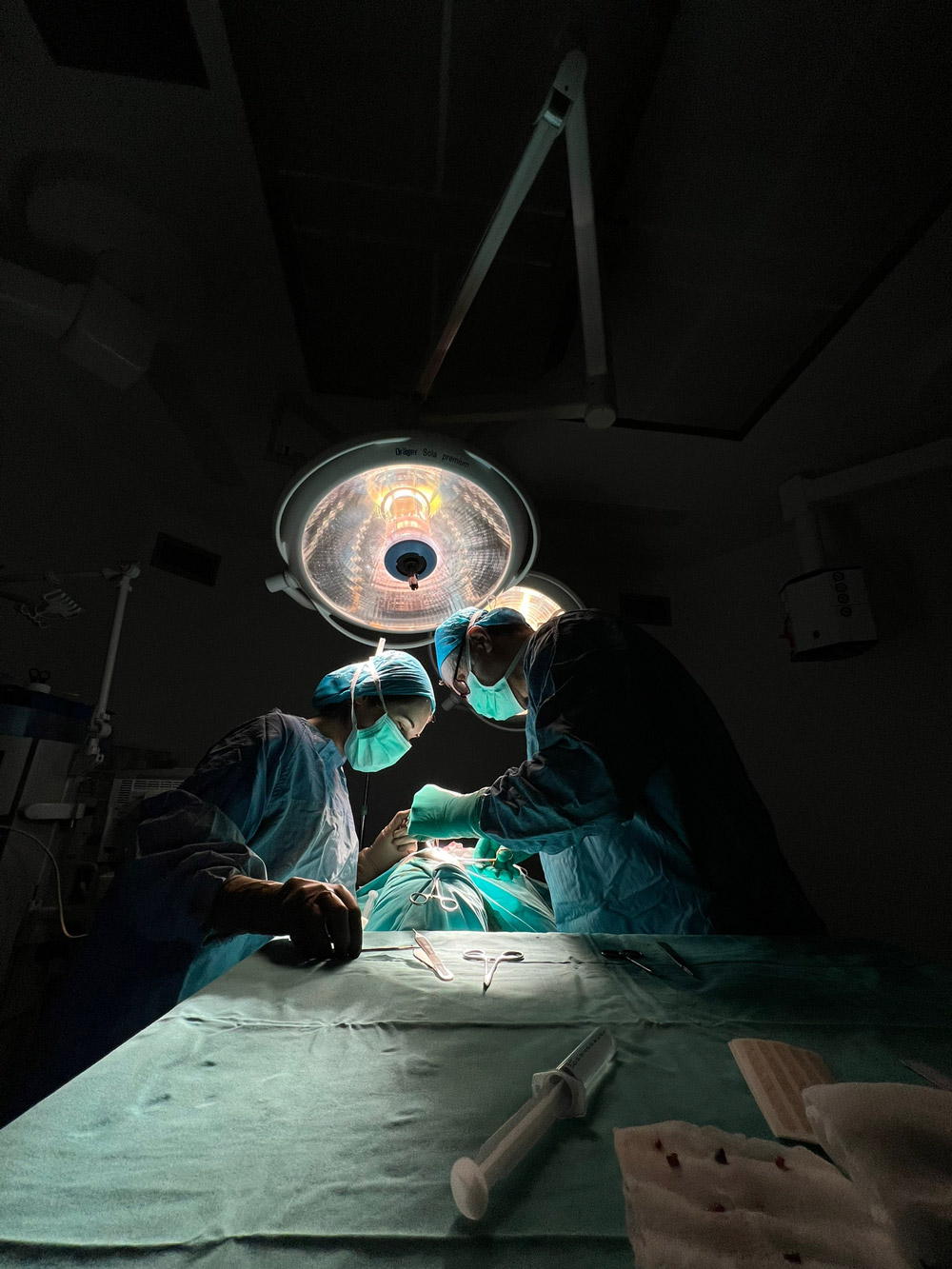Rhinoplasty is a surgical procedure aimed at reshaping and altering the appearance or function of the nose. It is a common cosmetic surgery that can also have functional benefits, such as improving breathing. In this comprehensive guide, we will explore the various aspects of rhinoplasty, including its history, reasons for considering it, types of rhinoplasties, the procedure itself, recovery, risks, and how to choose the right surgeon.
When searching for rhinoplasty near me, it’s essential to consider several factors to find the right surgeon and facility for your needs. First, location is significant, as you’ll want to choose a clinic or surgeon’s office that is easily accessible from your home, ensuring convenience for preoperative consultations, surgery, and postoperative follow-up appointments. Research potential best rhinoplasty surgeons in your area by checking their qualifications, experience, and reviews from previous patients.
Look for board-certified plastic surgeons or facial plastic surgeons who specialize in rhinoplasty. Consulting with multiple surgeons for initial evaluations is advisable to understand their approach, costs, and whether you feel comfortable with their expertise and communication style.
What is Rhinoplasty?
Rhinoplasty, often referred to as a “nose job,” is a surgical procedure that can modify the size, shape, and structure of the nose. It can be performed for cosmetic reasons to enhance the nose’s appearance or for functional reasons to improve breathing difficulties and correct congenital or acquired nasal deformities.
1. History and Evolution of Rhinoplasty
The origins of rhinoplasty can be traced back to ancient civilizations, such as India and Egypt, where reconstructive nose surgery was performed for aesthetic and functional reasons. Over the centuries, the surgical techniques and tools used in rhinoplasty have evolved significantly, leading to the sophisticated procedures available today.
2. Reasons for Considering Rhinoplasty
People consider rhinoplasty for various reasons, including:
- Cosmetic Enhancement: To improve the appearance of the nose, correct deformities, or achieve a more balanced facial profile. Also, in rhinoplasty, both bone and cartilage grafts play essential roles in shaping and supporting the nose’s structure. Surgeons may need to manipulate or modify nasal bones to achieve the desired aesthetic outcomes, such as narrowing the bridge or correcting deviations.
- Functional Improvement: To address breathing or ethnic rhinoplasty problems, correct and improve nasal blockages, or repair damage caused by injuries.
Types of Rhinoplasty
There are several types of rhinoplasty procedures, each catering to different needs:
- Cosmetic Rhinoplasty: Focused on enhancing the aesthetic appearance of the nose. Cosmetic rhinoplasty, often referred to simply as a “nose job,” is a surgical procedure designed to improve the aesthetic appearance of the nose. This elective surgery is one of the most commonly performed cosmetic procedures globally. Cosmetic rhinoplasty can address a wide range of concerns, including reducing or increasing the size of the nose, reshaping the nasal bridge, refining the nasal tip, narrowing the nostrils, or correcting asymmetry and other imperfections. The procedure is highly personalized, and the surgeon works closely with the patient to achieve their desired results while ensuring that the nose harmonizes with the rest of the facial features. Cosmetic rhinoplasty typically involves incisions made inside the nostrils (closed rhinoplasty) or with a small external incision across the columella (open rhinoplasty), depending on the complexity of the surgery.
- Functional Rhinoplasty: Primarily aimed at improving breathing and addressing structural issues. We can give liquid rhinoplasty as an example of this title. Liquid rhinoplasty, also known as non-surgical rhinoplasty or a non-surgical nose job, is a minimally invasive cosmetic procedure aimed at reshaping and enhancing the appearance of the nose without the need for surgery. This innovative technique involves the use of dermal fillers, typically hyaluronic acid-based products like Restylane or Juvederm, to strategically add volume and contour to the nose. It can be used to address various concerns, such as improving the shape of the nasal surgery, smoothing out irregularities, or lifting the nasal septum tip. Liquid rhinoplasty offers several advantages, including a relatively quick procedure time, minimal downtime, and immediate results.
- Revision Rhinoplasty: Corrective surgery performed to address issues or dissatisfaction with a previous rhinoplasty. Revision rhinoplasty, also known as secondary rhinoplasty, is a surgical procedure performed to correct or enhance the results of a previous rhinoplasty surgery. This specialized form of rhinoplasty is often more complex than initial procedures because it involves working with altered nasal anatomy, scar tissue, and potential functional issues resulting from the primary surgery. There are various reasons why someone might seek revision rhinoplasty, including dissatisfaction with the aesthetic outcomes, persistent nasal splint and deformities, breathing difficulties, or complications from the initial surgery.
Rhinoplasty Procedure
Surgical procedures in the context of rhinoplasty involve various techniques aimed at reshaping and enhancing the nose. These techniques may include the careful manipulation of nasal bone and cartilage to address aesthetic concerns and functional issues. Depending on the patient’s specific goals, surgical rhinoplasty can involve the reduction or augmentation of nasal structures, refining the nasal tip, narrowing or widening the nostrils, and correcting deviations or asymmetry. Surgeons work closely with each patient to develop a customized surgical plan that aligns with their individual desires while considering the nose’s overall balance and function.
The rhinoplasty includes procedures several key steps:
- Preoperative Consultation: Discuss your goals, expectations, and medical history with the surgeon.
- Anesthesia Options: Choosing between local anesthesia with sedation or general anesthesia.
- Surgical Techniques: The surgeon may use either an open or closed approach, depending on the specific needs of the patient.
- Duration of Surgery: Typically, rhinoplasty takes a few hours to complete.
- Recovery Process: The recovery period involves postoperative care, swelling, and healing.
Before and After Rhinoplasty
Understanding what to expect from rhinoplasty before and after is crucial:
Preparing for Rhinoplasty: Preoperative instructions, including avoiding certain medications and planning for the rhinoplasty recovery time.
What to Expect During Recovery: Detailed information on the healing process, including swelling and discomfort.
Long-Term Results and Maintenance: How the final results develop and how to maintain them.
Risks and Complications
While rhinoplasty can yield excellent results, it also carries potential risks and complications:
- Potential Risks and Complications: Including infection, bleeding, scarring, and dissatisfaction with results.
- How to Minimize Risks: Tips on reducing the risk of complications during and weeks after surgery.
Choosing a Rhinoplasty Surgeon
Selecting the right surgeon is critical for a successful rhinoplasty experience:
- Qualifications and Experience: Ensuring your surgeon is board-certified and has experience in rhinoplasty.
- Questions to Ask Your Surgeon: Important inquiries to make during the consultation.
- Patient Testimonials and Reviews: Checking the surgeon’s reputation through patient feedback.
Cost of Rhinoplasty
How Much Is A Rhinoplasty
The average cost of rhinoplasty can vary significantly based on several factors. On average, in the United States, the price of rhinoplasty typically ranges from $5,000 to $15,000. However, this is a broad estimate, and the actual cost can be higher or lower depending on various variables. Factors that influence the cost include the surgeon’s experience and reputation, the geographic location of the surgical facility, the complexity of the procedure, anesthesia fees, facility fees, preoperative tests, postoperative care, and any additional procedures performed alongside rhinoplasty. Patients should schedule consultations with qualified surgeons to get personalized cost estimates that consider their specific goals and circumstances.
The cost of rhinoplasty can vary widely based on several factors:
Factors Affecting Rhinoplasty Costs: Factors Affecting Rhinoplasty Costs: The cost of rhinoplasty can be influenced by several significant factors. One of the most crucial elements is the surgeon’s experience and reputation. Surgeons with extensive experience and a track record of successful rhinoplasty procedures often command higher fees due to their expertise. Additionally, geographic location plays a substantial role, with procedures performed in major metropolitan areas generally costing more than those in smaller towns or regions with a lower cost of living.
The complexity of the procedure itself is another determining factor; more intricate surgeries, which may involve significant structural changes or revisions, tend to be more expensive. Facility fees, including those for the surgical center and anesthesia, also contribute to the overall cost. The type of anesthesia used, with general anesthesia being more costly than local anesthesia with sedation, can affect expenses. Preoperative tests, consultations, and postoperative care should also be considered when budgeting for rhinoplasty. Ultimately, the total cost of rhinoplasty is a combination of these factors, and it’s essential for patients to discuss all associated expenses with their surgeon during the consultation process.
Frequently Asked Questions (FAQs)
Answering common questions about rhinoplasty, rhinoplasty recovery, and patient experiences.
Non-Invasive Nose Reshaping: Procedures using injectable fillers to alter the nose’s appearance.
Differences Between Surgical and Non-Surgical Options: Comparing the benefits and limitations of both approaches.
Whether you are considering rhinoplasty for cosmetic reasons, functional improvements, or corrective purposes, this comprehensive guide provides valuable information to help you make informed decisions and achieve your desired results. Rhinoplasty in Turkey, particularly in Istanbul, has gained widespread recognition as a sought-after destination for individuals considering nose surgery. This popularity can be attributed to a combination of factors.
Skilled and board-certified plastic surgery in Istanbul offers a wealth of expertise in rhinoplasty, with many having received international training and recognition. Moreover, the cost-effectiveness of rhinoplasty in Turkey, when compared to Western countries, makes it an attractive option for patients seeking affordability without compromising on quality.





